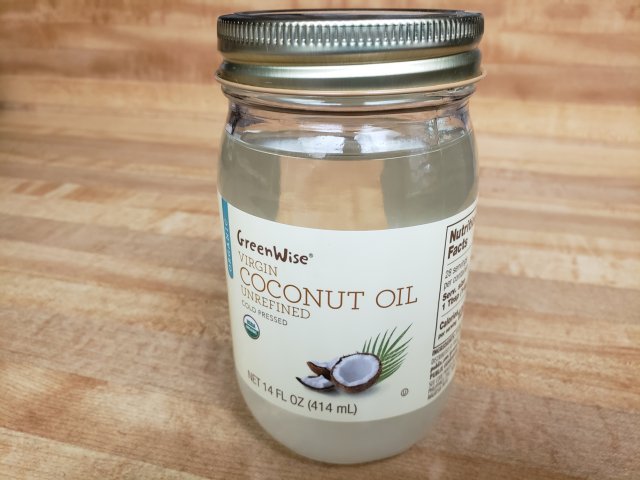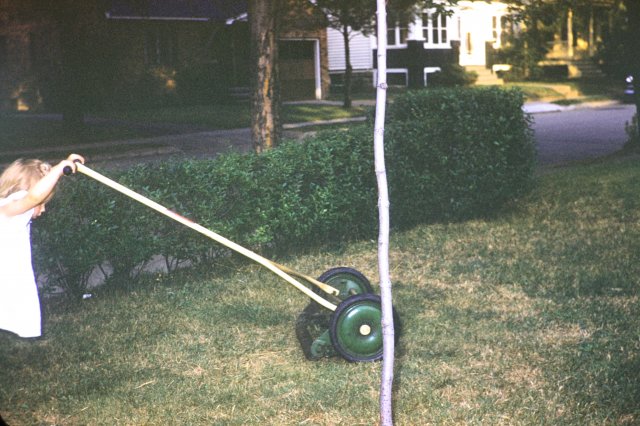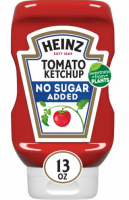 I've learned to avoid food items labelled "no sugar added," because that usually does not mean the product is less sweet, but is artificially sweetened. When I picked up this bottle of ketchup, I expected to find sucralose, which I detest, in the ingredient list. I was surprised and pleased to see that the sweetener in this case was not sucralose, but rather stevia.
I've learned to avoid food items labelled "no sugar added," because that usually does not mean the product is less sweet, but is artificially sweetened. When I picked up this bottle of ketchup, I expected to find sucralose, which I detest, in the ingredient list. I was surprised and pleased to see that the sweetener in this case was not sucralose, but rather stevia.
Ingredients: tomato concentrate from red ripe tomatoes, distilled white vinegar, salt, natural flavoring, stevia leaf extract, onion powder.
I had to laugh at the claim "Sweetness from PLANTS" on the label. Just what do they think sugar cane is, an animal?
But I got over it, and decided to try a bottle.
Much to my surprise, I loved it at first taste, and have so far had no cause to change my mind. It doesn't taste artificial, and has a brighter, fresher taste than regular ketchup. Time will tell, but I may be a convert.
I'm definitely still climbing out of battle-fatigue mode when it comes to writing. It's so weird. Normally I find writing to be energizing and restorative. I find it relaxing, even when it's also a struggle. Writing is one of the most important ways I keep my hold on sanity; writing is how I think. But ever since the election, my incessent and irresistable drive to write has gone into hibernation. Generally, I'm pleased with the results of the election, but I'm not dancing in the streets; I'm numb and exhausted. The last few months have been intense.
It may be weird, but at the moment it's a good thing. Too many other areas of life are demanding my attention! I know I'll be back to writing soon enough. But for the moment, I'm pulling out bits and pieces I've saved for just such a time.
This may not be the most important thing my father taught me, but it comes close to a universal truth.
Why is it that if you are trying to lose weight, one tablespoon full of ice cream will add five pounds, but if you are trying to gain weight, a whole day's worth of forbidden food makes not one iota of difference?
I love the Amish people. It was an Amish Supreme Court decision (Wisconsin v. Yoder) that became the backbone of home education today. Our family has deep personal ties to a court case that brought the Amish of Western Pennsylvania into downtown Pittsburgh to show their support in a situation that threatened their own way of life. The Amish are a very private people who just want to be left alone to live their traditional lives, but they will rise up and make themselves heard when their very existence is at stake. Several of our grandchildren were born in Amish Country. I'm not Amish, and I don't even know personally any Amish people, but I admire them greatly.
The following video is from Nick Johnson, about whom I know nothing else; it showed up as one of those YouTube suggestions after I watched something else. I found it delightful on many levels, from the scenery, to the simple, innocent, and very shrewd wisdom of the Amish people, to their solid values, to their delightful accents. (Did you know that their language is still understandable by modern-day speakers of Swiss German?) There's also an interview with Amos Miller, who is at the forefront of the fight for food freedom in Pennsylvania; we have some of his great meat in our freezer even now.
If you've ever met an Amish buggy on the road, you'll know how surprising this image is.
Traditionally, the Amish do not participate in civic matters. They do not vote. But this year, they see an opportunity to speak up for their way of life, the very existence of their farming and small business based culture, which is being crushed by heavy-handed governmental regulations that favor large corporations. They are voting this year, and in large numbers. For a look into a beautiful part of American culture that we rarely see, enjoy this 30-minute video.
Amos Miller is excited about the team that is gathering around Donald Trump.
They know the importance of farmers, they know the importance of food freedom, and I'm hoping that Trump will get that same perspective so we the farmers can do our duty that we've liked to do for many years. Farmers are going out of business like flies. We have lost probably 50% of our farmers within the last 20 years. We like to be farmers, we love to be farmers, but the rules and regulations that have been forced upon us for the last 30 years are terrible. We can't make a living, the food system is monopolized, the corporations want to run the government—so we're looking for someone to push government back, so we can be the true farmers that we love to be. Our culture loves to be farmers. The work ethic is still here; that can be lost in a very short period of time if we can't be farmers.
Permalink | Read 1184 times | Comments (0)
Category Health: [first] [previous] [next] [newest] Politics: [first] [previous] [next] [newest] Children & Family Issues: [first] [previous] [next] [newest] Food: [first] [previous] [next] [newest] Conservationist Living: [first] [previous] [next] [newest] Here I Stand: [first] [previous] [next] [newest]
One of my favorite Substack people (Heather Heying, Natural Selections) wrote this in her article entitled, "It’s an Upside Down World, and You’re Living In It."
I used to be a Democrat. Two of the things that I did that felt democraty include:
I bought as much of my food as possible at farmer’s markets, and got to know the farmers who grew my food. I bought organic, and avoided GMOs. When given a choice, I bought food that was grown closer to how it had been before humans got involved—cows that had spent their lives grazing outside, coffee grown in the shade on farms with canopy trees, tomatoes and strawberries picked at perfect ripeness, transported as little as possible, eaten fresh and raw.
And I refused pharmaceuticals except when absolutely necessary—the notable exception being vaccines, which I barely questioned until Covid raised my awareness. Over the counter drugs were no better. The rule of thumb in our house was: the longer it’s been on the market, the more likely it is to be safe. Aspirin seemed like a pretty safe bet, as did some antibiotics, in moderation. Everything else? Buyer beware.
I still do these things. My behavior was always informed by an evolutionary understanding of the world, a fundamental preference for solutions that have stood the test of time (e.g. beef over lab-grown meat), and wanting as little corporate product and involvement in my life as possible. Such behavior just doesn’t seem democraty anymore. It seems like the opposite.
In response, I wrote the following.
For decades, I have been saying that the Republicans need to reinvent themselves as the party of human-scale life. Seeing Trump and Kennedy together call to Make America Healthy Again gives me more hope in that direction than I've had in a long time.
Your beautiful, healthy approach to living felt Democrat-y to you, but in my life it has always been embraced by a mixture of folks, from hippies to conservative Christians, who shared a love of what we saw rejected by mainstream society: children and family life; non-medicalized childbirth and homebirth; the critical importance of breastfeeding; independent and home education; the belief that children can be far more competent and responsible than we give them credit for; small businesses; small farms and natural foods; the superior flavor and health benefits of raw milk and juice, pasture-raised animals, and organically-grown fruits and vegetables; homesteading and preserving/restoring the land; reclaiming heritage breeds and seeds; and a deep concern for the environment that was called conservation before it was taken over and ruined by the environmentalist movement.
If the Republican Party will truly embrace and fight for these values, I will in turn be thrilled to have finally become a Republican after 56 years a Democrat. The beginning of the end of my complacency with the Democratic Party was discovering the party's intense opposition to homeschooling—despite the fact that so many of the home education pioneers were radical liberals in their day.
Home education may have been the beginning of my disaffection, but the disconnect between the Democratic Party and the values I thought were their priorities became more and more obvious, accelerating at a most alarming rate, to the point where I agree with Dr. Heying again:
The democrats are claiming that they’re on the side of the little people. The only proper response to such claims is this: No. No you are not. Stop lying. And: No.
Republicans, this is your chance. Don't blow it by infighting, nor by sabotage from within. Reach out to the Independents and disaffected Democrats—like Dr. Heying, and RFK Jr., and Sasha Stone...and me—who are reaching out to you, willing—eager—to put aside our differences long enough to do the really hard work of seeking and saving that which is rapidly being lost.
Permalink | Read 1053 times | Comments (0)
Category Education: [first] [previous] [next] [newest] Health: [first] [previous] [next] [newest] Politics: [first] [previous] [next] [newest] Children & Family Issues: [first] [previous] [next] [newest] Food: [first] [previous] [next] [newest] Conservationist Living: [first] [previous] [next] [newest] Here I Stand: [first] [previous] [next] [newest]
I made nasi goreng (Indonesian fried rice) for dinner tonight. (It was yummy.) The oil I used was coconut oil, and the experience was not without mess and a few muttered grumbles: Why does coconut oil come in jars instead of bottles?
Before transferring the oil to one of the bottles I use when I make oil infusions, I took a picture of my coconut oil, because it finally occurred to me that coconut oil comes in jars because this is not what it looks like for most of you:
I guess I'll worry about getting the oil out of my tall, thin bottle when winter comes.
I think we all need some good news this morning, completely free of political angst.
Dark Chocolate May Be Good for the Eyes, Study Says
As with most Epoch Times articles, this may require an e-mail address to see, even though it's free. So I'll quote a few relevant sections.
Researchers from Italy found that eating just a few squares of dark chocolate—around three from a standard bar—could improve how well the blood vessels in your eyes work. These vessels are essential for maintaining clear and healthy vision.
It found that consuming dark chocolate significantly widened the blood vessels in the retina when exposed to flickering light. This widening improves blood flow, allowing the retina to receive more oxygen and nutrients, which helps it function properly.
[Lead author Giuseppe] Querques, who is also a professor of Ophthalmology at the Università Vita-Salute San Raffaele in Milan, said that this suggests that dark chocolate might help prevent eye diseases and could have broader health benefits, as the effects seen in the eye’s blood vessels might reflect how cocoa affects the rest of the body.
According to Queques, dark chocolate helps increase the production of nitric oxide, which makes blood vessels in the eyes widen more. The plant compounds in dark chocolate boost the amount of nitric oxide in the body, leading to greater dilation of retinal vessels.
Note that nitric oxide has many other heath benefits, and you can get it from sunshine as well as from chocolate. Also, beets. Two out of three....
Querques added that if further studies confirm that regular dark chocolate consumption plays a favorable role in preventing or managing retinal diseases, “daily cocoa intake could be used as a therapy or prevention not only of retinal but also of systemic diseases.”
I note with special pleasure that this is the first article I have read that speaks of the benefits of eating dark chocolate without feeling obligated to add, "But we all know chocolate also contains bad things like fat and sugar, so we don't recommend eating it."
It wasn't long ago that I wrote the following:
People who buy extra toilet paper, or cans of soup, or bottles of water for storage rather than immediate consumption are not hoarding, they are wisely preparing for any interruption of the grocery supply chain, be it a hurricane, a pandemic, civil unrest, or some other disruption. As long as they buy their supplies when stocks are plentiful, they are doing no harm; rather, they are encouraging more production, and keeping normal supply mechanisms moving.
Plus, when a crisis comes, and the rest of the world is mobbing the grocery stores for water and toilet paper, those who have done even minor preparation in advance will be at home, not competing with anyone.
It's always fun to come upon someone who not only agrees with what I believe, but says it better and with more authority. Lo and behold, look what I found recently, in Michael Yon's article, First Rule of Famine Club.
Hoarders, speculators, and preppers are different sorts, but they all get blamed as if they are hoarders. Hoarders who buy everything they can get at last minute are a problem.
Preppers actually REDUCE the problem because they are not starving and stressing the supplies, but preppers get blamed as if they are hoarders.
Speculators, as with preppers, often buy far in advance of the problems and actually part of the SOLUTION. They buy when prices are lower and supplies are common. Speculators can be fantastic. When prices skyrocket, speculators find a way to get their supplies to market.
I hadn't thought before about speculators. I'd say their value is great when it comes to thinking and acting in advance, but the practice becomes harmful once the crisis is already on the horizon. Keeping a supply of plywood in your garage and selling it at a modest profit to your neighbors when they have need is a helpful service, but buying half of Home Depot's available stock when a hurricane is nearing the coast is selfish profiteering.
Permalink | Read 860 times | Comments (0)
Category Hurricanes and Such: [first] [previous] [next] [newest] Politics: [first] [previous] [next] [newest] Food: [first] [previous] [next] [newest] Here I Stand: [first] [previous] [next] [newest]
Check out the first three minutes of this How to Cook That video for some depressing news from Switzerland. Toblerone isn't Toblerone anymore!
First of all, hooray for Switzerland for being very picky about where and how "Swiss" products are made. America's labelling rules in this matter are much too weak, which has resulted in products that are cheaper, yes, but also made with inferior ingredients and in countries that do not have the same safety standards we have come to expect. Mind you, I'm strongly in favor of food freedom, especially with regard to individual choices and small enterprises. (It's absurd that in the Free State of Florida dairy farmers can't sell raw milk for people to drink but have to label it as "for pet consumption only." It's even more absurd that the Commonwealth of Pennsylvania—in the name of health and safety—is persecuting independent Amish farmers, who have been safely feeding themselves and others for centuries. But that's a story for another time.) However, if we are to be free to make our own food choices, honest and clear labelling is essential.
I trust the Swiss to maintain their high standards even if they now make some of their Toblerone in Slovakia, and the ingredients don't all come from Switzerland, but I can't help being disappointed. Maybe they should make two versions, "Classic Toblerone," all Swiss (except the cocoa beans), and the other "New Toblerone," and see how it flies. We know what happened with Coke! But Coke messed with the basic recipe, and I believe Toberone is not doing that.
I'd be happy to volunteer for taste-testing.
After dealing with the COVID-response-induced shortages and empty shelves, a lot of people mock and shame people who buy more than their immediate need's worth of a commodity, calling them hoarders, or (even more derisively) "Preppers." During a time of crisis and shortage, such an attitude is understandable.
In normal times, it is dead wrong.
People who buy extra toilet paper, or cans of soup, or bottles of water for storage rather than immediate consumption are not hoarding, they are wisely preparing for any interruption of the grocery supply chain, be it a hurricane, a pandemic, civil unrest, or some other disruption. As long as they buy their supplies when stocks are plentiful, they are doing no harm; rather, they are encouraging more production, and keeping normal supply mechanisms moving.
Plus, when a crisis comes, and the rest of the world is mobbing the grocery stores for water and toilet paper, those who have done even minor preparation in advance will be at home, not competing with anyone.
Here's an interesting interview with a guy who has studied crisis preparation for decades. I don't know him, don't know anything about him—but he's no fearmonger, despite taking the necessity of the job very seriously. He's calm, and reasonable, and worth listening to, if you have a spare hour.
Listening to this makes me miss the days when we lived in the Northeast, and had a cool basement. That would be a great place to store emergency supplies. Here, we'd have to store everything in our adequate but limited living area: we have no basement, and the garage, the attic, and anything outside are 'way too hot for most of the year (not to mention favorite places for critters to hang out).
On the other hand, we don't have to worry about freezing to death in winter weather. It's been a long time since we've routinely kept a stack of firewood!
Permalink | Read 973 times | Comments (0)
Category Hurricanes and Such: [first] [previous] [next] [newest] Random Musings: [first] [previous] [next] [newest] Food: [first] [previous] [next] [newest] Here I Stand: [first] [previous] [next] [newest]
I suspect something is wrong with our food, as well as our habits of living.
Reading my father's journals from 1959 to 1970, I noticed in particular something about our eating habits: we ate dessert three times a day. We had lunch dessert, dinner dessert, and bedtime dessert. I remember trying hard to convince my parents that we should logically have breakfast dessert as well, but was overruled. Probably because breakfast in those days was all too often sweet enough to be dessert in itself. True, we didn't have pre-sweetened cereal, but we had sugar in a bowl on the table....
And yet we were not overweight, much less obese. Not thin, but a healthy weight. Moreover, not one of us ever worked out at a gym or had any kind of regular exercise program. Ordinary living kept us in decent shape. My father was an engineer with a desk job; my mother a homemaker.
What made the difference? I can only guess.
I'm convinced that our food was both healthier and tastier. After all, I am older than McDonald's. Milk from a local dairy was delivered in glass bottles to our front porch; it was pasteurized, but not homogenized. Meat came from local butchers; I liked it best from the Jewish butcher, because then I was allowed to nibble on the raw ground beef, as we knew it had not been in contact with any pork products. (Pork was an exception to "food was healthier back then"; trichinosis was still a big problem, caused by pigs being fed raw pork, or so I was told.)
We didn't have farmers' markets back then; what we had instead was nearby farms that sold some of their produce at stands along the road. Their fruits and vegetables were only available in season, but they sure were fresh, and clearly superior to what the grocery stores sold. Our food didn't have nearly the variety we have today, but it was enough, and it was good. There's a blessing in being able to have access to food flown in from halfway across the world, and ethnic restaurants on every corner, but overall, thanks to agricultural mass production, it doesn't have the flavor it once had.
Consciously or unconsciously, we undoubtedly eat more quantity in an effort to make up for lost quality.
The other big difference that I remember in our food is portion size. At home, we always had plenty to eat, but common sense, both nutritionally and financially, kept the portions quite a bit smaller than is common today, even at home. And restaurant portions are ridiculous now! When I was growing up, restaurant meals were very rare occasions, and fast food almost non-existent. Even in restaurants the portions were much smaller than today. I had my first McDonald's hamburger during college; it cost 23 cents and, if memory serves, was half the size of a quarter-pounder today.
One thing we didn't do much of was snacking. Except for a small bit of milk-and-cookies after school, which was primarily valuable for the debriefing/decompressing time spent in the kitchen while my mother prepared dinner, eating between meals was considered unnecessary and even unhealthy.
Did I mention that we mostly ate at home? The food itself was largely home-prepared. Store-bought cookies, box cake mixes, pre-prepared salads, frozen meals—all either non-existent or considered far inferior to homemade. (Exception: Girl Scout cookies.) [Update: Thanks to Porter for catching my egregious misstatement, as I had orginally written "superior"! Not, I assure you, a Freudian slip.]
Then there was exercise. If there were fitness establishments, I never saw one. Gym class in school was for fun, not fitness: tumbling, marching, and playing games (including dodge ball) where winning was not of primary importance. There were no formal team sports that I remember before high school, though pick-up games of all sorts were common in our neighborhood, which abounded with playmates of all ages. Winter or summer, we were outside and active. Avid bookworm that I was, I still spent much of my spare time outside, either playing with my friends or wandering the fields and woods near our house. As I said, my father had a sedentary job, but walked for transport when he could (sometimes wearing snowshoes in the winter), played games in the yard with us and the neighborhood kids who congregated there, and—though not as often as he would have liked—took us hiking in his beloved Adirondack mountains. There was also a good place to swim that was only an eight-minute drive from home, so you can bet that in those days without air conditioning swimming was a frequent summertime activity. Plus, he and my mother (occasionally helped by us kids), spent a lot of time gardening. Not farming, just ordinary suburban gardening, but everything was done by hand. Sawing wood, digging holes, planting bushes, roses, flowers, and even the occasionable vegetables, though the latter were much more efficiently obtained directly from the farms. Then there was mowing the lawn: keep in mind that this is what our lawn mower looked like:
I don't mean to imply that our situation was ideal. We were in a time of transition, and definitely headed in an unhealthy direction, but we were not all the way there yet when I was young. Both society at large, and the medical profession in particular, had already given up on breastfeeding and thought bottle-feeding with a concoction of sterilized water, evaporated milk, and corn syrup was the superior way to go. Someone with more financial sense than taste buds then introduced our generation to the instant orange-flavored drink known as Tang, and as a teenager I downed Carnation Instant Breakfast before going off to school. Unbelievably, these abominations still exist today.
But for a while, in my childhood, we ate nutritious foods full of natural natural flavors, and spent a lot of active time outdoors (without sunscreen). We even survived having regular bedtime dessert.
I couldn't resist posting this Future Proof video, because my husband is obsessed with flavored sparkling water, and our grandchildren love it, too—probably because they're allowed to drink more of it than they are allowed soda. Special note to said husband: check out this guy's favorite brand (9:17).
(14 minutes on normal speed, mild language warning. I am, by the way, really annoyed by the objectionable language that finds its way into so many YouTube videos. It would probably be easier to note when there isn't bad language. Good ol' YouTube, for whom "free speech" means you can swear to your heart's content as long as you refrain from expressing unfashionable opinions.
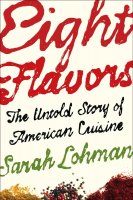 Eight Flavors: The Untold Story of American Cuisine by Sarah Lohman (Simon & Schuster, 2016)
Eight Flavors: The Untold Story of American Cuisine by Sarah Lohman (Simon & Schuster, 2016)
This was not the Sarah Lohman book that first caught my eye. That honor belongs to Endangered Eating: America's Vanishing Foods, which was published in October of last year. But I make extensive use of eReaderIQ to find good prices for Kindle books, and Eight Flavors came up first.
Lohman tells the stories of eight quintessentially American flavors: where they came from, how they get to us, how they became "American" from their widely divergent sources. This is a book my father would have loved, and so, I believe would my sister-in-law, who has in the past given us several similar books.
Eight Flavors is easy and delightful reading. My main complaint is that Lohman is thoroughly immersed in her modern, urban culture, in which heretofore objectionable language is casually used, and worse, historical events cannot be presented without pointing out how oppressive and racist the people were back then. A simple example: In the chapter on garlic, she quotes a 1939 magazine article that remarks on the cultural assimilation of Italian-American baseball superstar Joe DiMaggio with, “He never reeks of garlic and prefers chicken chow mein to spaghetti.” Lohman dubs it "first-class casual racism," even though her chapter clearly explains that garlic, a hallmark of Italian cooking, was still a foreign taste to many Americans. I remember that when we lived just outside of Boston, the train would pass a set of apartments that were popular among people from India; the scent of Indian spices was distinctive and pervasive, even from the train. I'll grant that there's no subtlety in that observation—for all I could tell, the residents might have been Bengali or Pakistani rather than Indian—but there's nothing evil about it. Noting that one can often tell by sense of smell what food a person has recently eaten is not racist—especially when the flavor is as strong as garlic.
She also reveals her (sometimes understandable) contempt for people who don't recognize that "chemical additives" are sometimes identical to the chemicals present in totally natural products. She acknowledges that the flavors found in nature are much more complex than the primary flavor molecule (e.g. vanilla versus vanillin) but at the same time dismisses the point.
All that aside, it's an enjoyable book. I'll share Lohman's list of delightful flavors to whet your appetite.
- black pepper
- vanilla
- chili powder
- curry powder
- soy sauce
- garlic
- monosodium glutamate (MSG)
- sriracha
I've long known, and been troubled by the fact that nearly all of our vitamin C comes from China.
It's not that I'm against trade with China. When two powerful enemies have a thriving trade relationship, they are much less likely to seek to blow each other to bits.
On the other hand, China's terrible reputation when it comes to health and safety, environmental, labor, and human rights concerns really ought to be taken more seriously, especially when it comes to what we ingest.
I'm sufficiently convinced of the value of vitamin C in preventing/mitigating illness that it's a regular part of my health routine. As I said to one of my doctors, who agreed that he followed a similar philosophy, "I don't care if it's only the placebo effect—the placebo effect itself turns out to be effective about a third of the time." For that reason, I've been seeking a non-Chinese alternative to vitamin C.
I think I've found one: LifeSource Vitamins.
It from no one's recommendation, no advertisement, nothing but a simple internet search on "vitamin c not from China." So this is not a review, nor an endorsement of all they offer. But their vitamins do not come from China, and what's more, they're local (just across town in Winter Park). That was good enough for me to give them a trial. I ordered their 500mg vitamin C, and also decided to try some multivitamins and minerals. The latter is a whole lot more than just vitamins; I reproduce the back label here, not only for your information, but so I can easily read it when I want to; to read the actual label I have to resort to a magnifying glass.
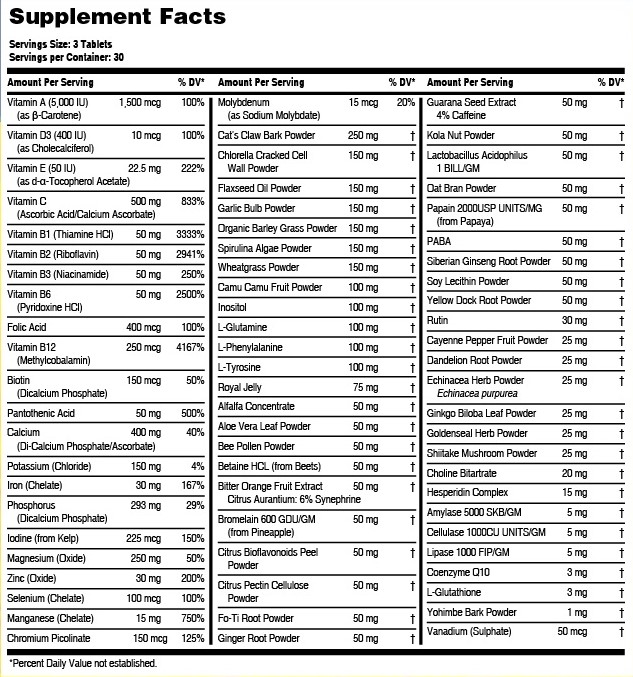
I have no idea what good all these various things are supposed to do for me. (Chlorella Cracked Cell Wall Powder, anyone?) I'll let you know if I can suddenly leap tall buildings in a single bound. I'm more interested in the more ordinary ingredients, and will note that the "serving size" is three tablets (you're supposed to take one with each meal), so if some of these percentages look a little high to you, it's easy to take just one.
And that's another thing I like about these vitamins: they are easy to take, period. I don't generally have trouble swallowing pills, but often have a real problem with vitamin C tablets. For whatever reason, they sometimes stick in my throat, causing me to choke and/or vomit. It's not pleasant to feel I'm rolling the dice everything I swallow a vitamin. These vitamin C tablets, however, don't have the customary rough coating, but are smooth—and slide right down.
As I said, this can hardly be a review of the product at this point—why do companies ask for reviews from people who can't possibly have enough experience to say more than, "Yep, it arrived in good time and the packaging was intact"? But I asked for non-Chinese vitamin C, and I'm grateful to have found some.
So I'm passing along the information the best way I know.
The headline was admittedly clickbait: I’m QUITTING Gardening After Reading THIS, So Should YOU. And it caught me. I actually suspected that it didn't mean what it sounded like, and in the process I discovered another interesting YouTube channel.
After his brief rant, we get to see him transplanting fruit trees, dealing with gophers, demonstrating his "weedeater," and more.
When we lived in Rochester, New York, one of our neighbors grew red and black currant bushes in her backyard, and shared them with us. Sadly, she moved away soon after we become acquainted, and the bushes were removed. At the time, I thought the new residents just didn't want to bother with them, but maybe they knew something I didn't:
The plants were illegal. Here's the story. (17 minutes at normal speed)
In brief: Plants of the genus Ribes, which also includes gooseberries, are susceptible to a fungus that also produces white pine blister rust, which in the early 1900's was devastating our white pine trees.
Apparently the lumber industry had a more vigorous lobby than the gooseberry family, and our federal government both outlawed the Ribes family and began a massive program of eradication. If it had been the 21st century, gooseberry fans would have been demonetized on YouTube and banned from Twitter.
The federal regulations against Ribes were lifted in 1966, but many states still prohibit or restrict it. My neighbor's yard didn't become a legal site until 2003, and many places in New York still aren't. Here's an interesting list of state regulations. My favorite may be Pennsylvania: "In 1933, Pennsylvania passed a law that limited growing gooseberries and currants in certain areas; however, the law is not enforced. Therefore, all Ribes can be grown in the state."
(It must be pointed out, however, that laws that are traditionally not enforced can still be a threat. if your name is Donald Trump, growing currants in Pennsylvania might still land you in court faster than you can eat one.)
Back in the early 1900's, national governments apparently felt they were faced with a stark choice: save the pine trees, or save the currants and gooseberries. The United States chose lumber; Europe chose food. Both are important, of course, but in hindsight it seems clear that letting nature take its course might have been best. When governments take to using hatchets when flyswatters will do, bad things happen. In subsequent years, better approaches to the white pine blister rust problem have been developed. I suspect these developments would have come sooner if we hadn't decided to commit plant genocide instead.
Because of their great nutritional benefits, Ribes, especially black currants, are making a slow comeback. But I've never seen them in our local grocery store. For that, so far I still need to make a trip to Europe, where currants and gooseberries are easily found.
You might enjoy the post I wrote 13 years ago about my visit to a farm near Basel, Switzerland, where I was allowed to taste freely of gooseberries, three colors of currants, and other marvelous fruits that are difficult to procure here.
UPDATE 1: I have it on good authority that there's at least one farm in New Jersey where I can pick gooseberries and currants if I'm passing through at the right time. It would be interesting to know if "currants" listed on their website also includes the black variety, which New Jersey still heavily restricts—that is, if the Wikipedia article is correct, which is a risky assumption, though less so with currants than with current events).
UPDATE 2: Do not be confused by what are called Zante currants, which look like mini-raisins and are made from small grapes. You can find Ribes black currant products on amazon.com, but a search is more likely to misdirect you, if that's what you're looking for.
UPDATE 3: In the United Kingdom, Australia, and no doubt some other parts of the world, purple Skittles candies are black current flavored. In the United States, the flavor is grape. Not content with trying to eradicate the plant itself, we seem intent on eradicating America's taste for the fruit.
Permalink | Read 1772 times | Comments (2)
Category Health: [first] [previous] [next] [newest] Politics: [first] [previous] [next] [newest] Travels: [first] [previous] [next] [newest] Food: [first] [previous] [next] [newest] Conservationist Living: [first] [previous] [next] [newest]


